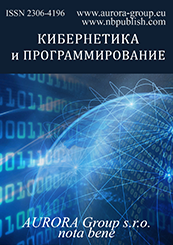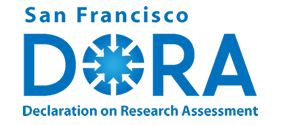Programming languages
Reference:
Novakova, N.E., Goryachev, A.V., Goryachev, A.A., Vasil'ev, A.A., Monakhov, A.V. (2013). Project management system in computer-aided design. Cybernetics and programming, 4, 113. https://doi.org/10.7256/2306-4196.2013.4.8301
Abstract:
In the project activities related to the creation of complex technical objects, apply automation design. The design process seems different models depending on the purpose of the application of these models adopted forms or rules of their construction. The concept of a formal representation of the design process, described in the works of Yoshikawa, was further developed in the theory of computer-aided design. During the design stages of release, project procedures and project operations. Stage consists of design procedures, each of which in turn includes a number of project operations. Project operation is a separate step in the design. Each design proce- Mr. completed design decision. In practice, the design of controlled-use network model, which is an organizational tool for project management. The main elements of the network model are: work, and the way the event. In the model, a network schedule, the complex design procedures depicted as a directed graph, which reflects its logical sequence and duration of the relationship. Gantt Chart is the most obvious way of presenting the project schedule.
Keywords:
directed graph, network model, project, computer aided design, route design, project management, CAD, project activity, Gantt chart, design stages
Knowledge bases, intelligent systems, expert systems, decision support systems
Reference:
Borovskii, A.S. (2013). Models security evaluation of the potentially dangerous objects with expert information in fuzzy form. Cybernetics and programming, 4, 1445. https://doi.org/10.7256/2306-4196.2013.4.9593
Abstract:
The article deals with the problem of making a decision about the components of the physical security system for the potentially dangerous objects. The authors determines the stage of the task requiring expert information - conceptual design, including the analysis of the vulnerability of the object, the development of practical recommendations for the creation of a physical security system, selecting the variant and the composition of engineering-security equipment. The article presents different methods for solving the task, highlights the problem of the evaluation criteria for the level of protection of the object by chosen engineering and technical facilities, which consist of the uncertainty and imprecision of the expert data evaluation during the analysis of object security. The aim of the article is to set up models and methods for evaluation of object protection. The given method is based on the representation of the protected object in form of a graph. The article reviews general properties of the object’s graph. The author introduces the definition of the measure of structural protection. This measure allows to evaluate effectiveness of the security placed in the way of the offender during his aim of access the object and moving throughout the place with intent to commit unlawful acts. The author evaluates the possibility that the offender will get to one of the critical elements of the object without being detected by the technical means of security and being delayed by the physical barriers. The measure of the protection shows the possibility of detection and delay of the offender on the most vulnerable path to a critical element. The author reviews the Dijkstra's algorithm appliance to the task of defining the less protected on the graph and modifies it to compute the measure of structural protection. The article describes ways of processing of expert information in the form of fuzzy numbers, offers the method of optimal placement of control points at the object via standard genetic algorithm. The article gives an example of calculation of the measure of structural protection by the described program.
Keywords:
engineering and technical security, physical security system, graph, Dijkstra's algorithm, fuzzy value, linguistic variable, defuzzification, Saaty method, genetic algorithm, imprecision, uncertainty
Forms and methods of information security administration
Reference:
Negol's, A.V., Piskova, A.V. (2013). Positioning systems. Cybernetics and programming, 4, 4650. https://doi.org/10.7256/2306-4196.2013.4.9357
Abstract:
This paper describes the principle of operation of GPS satellite navigation and reviews the positive and negative aspects of such systems. Authors note that GPS identification - identification of a navigator in space – is calculated by constructing a circle with a radius equal to the distance between the satellite and the receiving device. User location can be determined with an accuracy of up to one meter, with the help of auxiliary identification subsystem containing data about satellites ‘orbits. The paper gives the positive and negative aspects of navigation. All the results of researches held at the Massachusetts Institute of Technology show that in the XXI century the private life of every person has certain limitations. If it is necessary to have a reliable system of identification, everyone must be prepared for the fact that information about a location of a person can be accessed by someone without authorization. Hence the development of improved systems of data protection is requires as well as promoting their use among ordinary users.
Keywords:
GPS, navigation, identification, privacy, location, security system, satellite, Google, smartphone, base station
Computer graphics, image processing and pattern recognition
Reference:
Mezhenin, A.V., Izvozchikova, V.V. (2013). Methods of the normal vectors construction in tasks of objects identification. Cybernetics and programming, 4, 5158. https://doi.org/10.7256/2306-4196.2013.4.9358
Abstract:
The article deals with methods of calculating of normal vectors in tasks of similarity analysis of the polygon models of arbitrary topological type. Such studies can be used in evaluation of the quality of simplification of a polygonal net and the accuracy of the reconstruction of the three-dimensional models in tasks of photogrammetry. To determine the similarity of the three-dimensional (polygonal) objects author proposes to use the approaches of the general topology, the Hausdorff dimension. The author points out, that the most important step in the calculation of the discussed metric if in building the normal vectors to the surface. For the evaluation of the given methods and clear visualization of the normal vectors, the author developed m-functions in the MATLAB Image Processing Toolbox (IPT) environment. This study confirms the correctness of the chosen direction of the for the analysis of the similarity of polygonal models of arbitrary topological type. The proposed approach can be applied to the tasks of evaluating the quality of algorithms for recognition and reconstruction of 3D models and to the problem of evaluation of the quality of simplified polygonal models.
Keywords:
design, normal vector, identification of objects, algorithm, sensor, polygon model, topological space, polygon mesh, computer graphics, calculation
Automation of manufacturing and production planning
Reference:
Polevshchikova, Y.A., Akbarov, O.M. (2013). Forest cover assessment of the Volzhsk forestry of Mari El Republic using methods of remote sensing. Cybernetics and programming, 4, 5965. https://doi.org/10.7256/2306-4196.2013.4.9333
Abstract:
The article provides an overview of existing international projects for vegetation assessment using remote sensing data. Particular attention is paid to the development of methodology for assessing the disturbance of forest cover from satellite monitoring and GIS technologies in modern software packages. One of the major projects that bring together experts, scientists and researchers in many countries in the field of satellite monitoring is a project NELDA (Northern Eurasia Land Dynamics Analysis). The aim of this study is to evaluate forest vegetation of the Volzhsk forestry of Mari El Republic using based on the analysis of nonsimultaneous multispectral Landsat satellite images of medium resolution using GIS technology. As a result of the study authors presents a review of existing GIS projects for for thematic mapping of forest vegetation based on the use of satellite imagery. The authors developed and applied a monitoring methodology for disturbed forest lands found using remote sensing data in the GIS environment.
Keywords:
remote sensing, Mari El, satellite monitoring, GIS, forest cover, satellite image, research, thematic map, GIS technology, forecast
 This work is licensed under a Creative Commons Attribution-NonCommercial 4.0 International License.
This work is licensed under a Creative Commons Attribution-NonCommercial 4.0 International License.









 © 1998 2025 Nota Bene. Publishing Technologies. NB-Media Ltd.
© 1998 2025 Nota Bene. Publishing Technologies. NB-Media Ltd.




